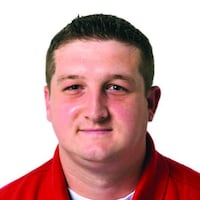Unmatched coverage
The Springfield News-Sun provides in-depth coverage of downtown developments, including recent stories on the upcoming auction of an historic bank building on West Main Street and the future location of the Eagles lodge.
By the numbers
$1.5 million: Estimated cost of the Ohio Valley Breast Center on the campus of the Ohio Valley Surgical Hospital.
13th: Clark County's rank for breast cancer out of the 88 counties in Ohio.
1 in 8: Number of women who will be diagnosed with breast cancer.
A $1.5 million expansion will allow the Ohio Valley Surgical Hospital to offer state-of-the-art breast examinations, which could reduce the number of follow-up visits and improve cancer detection.
The Ohio Valley Breast Cancer opened Wednesday at 140 W. Main St.. The facility is believed to be the first in the Springfield region to offer both three-dimensional mammography and whole breast ultrasounds.
The total investment in center was about $1.5 million, including $1.1 million in technology, said Ohio Valley Chief Executive Officer Steve Eisentrager. The expansion created about eight to 10 jobs, including a new nurse coordinator who will offer personal guidance to patients.
About 15 Ohio Valley administrative positions recently moved off site to 72 and 74 W. Main St. to make room for the breast center.
The new technology fit into the hospital’s plan for expansion, Eisentrager said. The 3D mammography will allow for better detection services and less frequent follow-up visits, as well as more personal care, Eisentrager said.
“It’s a service built around asking how do we reduce that anxiety as much as possible,” Eisentrager said.
The new facility is giving residents one more reason to “shop local” for medical care, said Horton Hobbs, vice president of the Greater Springfield Chamber of Commerce.
“It’s good news for individuals who can find state-of-the-art care close to home and for our community, which benefits when goods and services are sought locally,” Hobbs said.
Clark County has a high breast cancer rates in Ohio, ranking 13th out of 88 counties, according to statistics from the Clark County Combined Health District. It’s the leading cancer diagnosis in women as one in eight will get breast cancer in their lifetime, according to the National Cancer Institute. Breast cancer also affects about 2,000 men per year.
“We certainly need to have as many points in the community where women can have those issues diagnosed and treated as soon as possible,” Clark County Health Commissioner Charles Patterson said. “We’re not just dealing with the physical aspect, but the mental aspect of the disease as well. It has a significant impact on our community.”
A conventional mammogram is an X-ray of the breast that is used to screen for cancer. It produces one image of overlapping tissue, which makes it more difficult to detect cancers and in some cases leads to false-positives.
The 3D mammograms take multiple images of the breast, providing a better rendering and allowing areas of concern to be examined from different angles, said Dr. Jennifer Daniels, medical director for Ohio Valley Breast Services.
The hospital held a soft launch at its breast center last month before officially opening Wednesday. The staff has already used the advanced technology to detect lesions it couldn’t find on two-dimensional images, Daniels said. The machine is able to take both 2D and 3D images.
“We’re able to pick up more subtle findings,” she said.
Recent studies show 3D mammography is becoming the new standard for health care providers to more easily detect cancer, said Dr. Mitva Patel, an assistant professor at Ohio State University Radiology Department who specializes in breast imaging. OSU’s Wexner Medical Center has been offering 3D mammograms for more than two years.
“It’s worked really well,” Patel said.
One of the major disadvantages is that sometimes insurance companies won’t cover the cost of the 3D mammogram, she said. However, the new technology could lead to fewer follow-up visits, Patel said, resulting in cost savings.
Several hospitals in Dayton and Columbus offer the 3D technology, including Miami Valley Hospital and Miami Valley Hospital South in Dayton, Upper Valley Medical Center in Troy and Riverside Methodist Hospital in Columbus.
The Springfield Regional Imaging Center is investigating adding 3D mammography, said Community Mercy Health Partners spokesman Dave Lamb.
“We’re on a mission to build awareness of breast cancer and the need for an annual mammogram,” Lamb said.
While Kettering Health Network offers whole breast ultrasounds, it has concerns about the amount of radiation being used with 3D mammography, said Elizabeth Long, manager of media and government relations for Kettering Health Network. It wants to see more research on the long-term benefits before improving technology, she said.
“We want to see how is it more beneficial,” Long said.
About the Author
